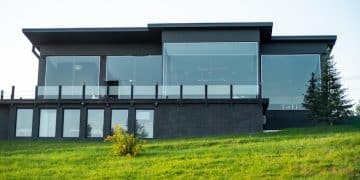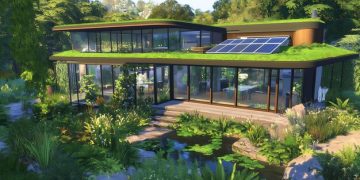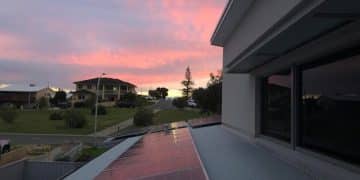Sustainable Home Construction: 3 Ways Materials Will Transform by 2026
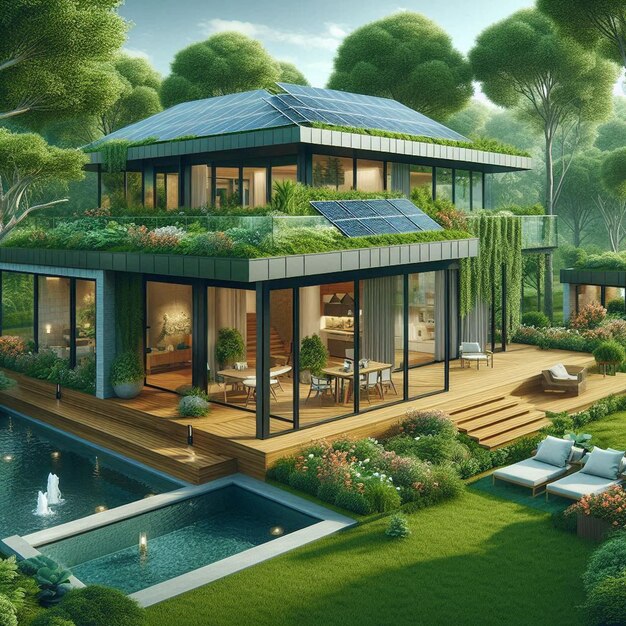
Sustainable building materials are poised to revolutionize home construction by 2026 through eco-friendly innovations, cost-effective solutions and improved energy efficiency, reshaping residential development for a greener future.
The future of home construction is rapidly evolving, with sustainability taking center stage. By 2026, expect to see dramatic changes in how homes are built, driven by innovative and eco-friendly materials. These changes promise not only to reduce our environmental impact but also to create healthier, more efficient, and more resilient homes. Let’s explore 3 Ways Sustainable Building Materials Will Transform Home Construction by 2026, focusing on the materials set to make the biggest impact.
Embracing Bamboo: A Versatile and Renewable Resource
Bamboo, often dubbed “green steel,” is rapidly gaining traction as a premier sustainable building material. Its impressive strength, rapid growth rate, and versatility make it an ideal alternative to traditional materials like wood and concrete. But how exactly will bamboo transform home construction by 2026?
Structural Applications of Bamboo
Bamboo’s high tensile strength allows it to be used in various structural components, from framing to roofing. Its lightweight nature also simplifies construction, reducing the need for heavy machinery.
Aesthetic and Design Flexibility
Beyond its structural benefits, bamboo offers incredible design flexibility. It can be used for flooring, paneling, and decorative elements, adding a unique and natural aesthetic to homes.
- Rapid Growth: Bamboo’s fast growth rate ensures a sustainable supply.
- High Strength: Comparable to steel in tensile strength, making it structurally sound.
- Versatile Uses: Suitable for structural, aesthetic, and decorative applications.
- Carbon Sequestration: Bamboo absorbs more carbon dioxide than many trees, contributing to carbon footprint reduction.
By 2026, expect to see bamboo integrated into mainstream construction practices, offering an eco-friendly and aesthetically pleasing alternative to conventional materials. Its use will not only reduce environmental impact but also enhance the overall design and resilience of homes.
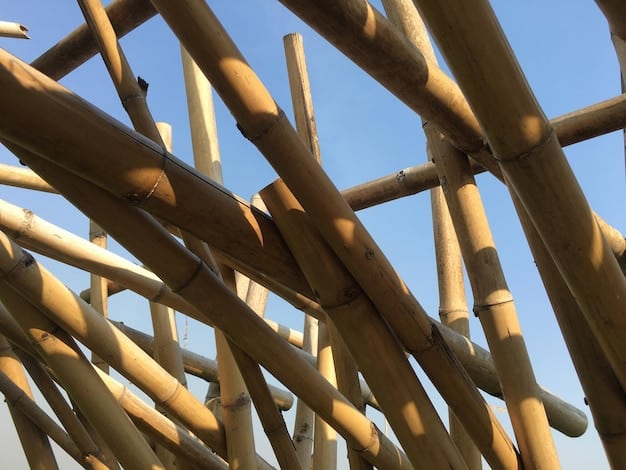
The Rise of Mycelium: Building with Fungi
Mycelium, the root structure of fungi, is emerging as a groundbreaking sustainable building material. Its ability to bind organic matter together into strong, lightweight structures makes it an excellent candidate for bricks, insulation, and even furniture. How will mycelium revolutionize home construction by 2026?
Mycelium Bricks and Panels
Mycelium can be grown around agricultural waste, such as straw or wood chips, to create solid bricks and panels. These materials are not only biodegradable but also offer excellent insulation properties.
Self-Repairing and Adaptive Structures
One of the most exciting aspects of mycelium is its potential for self-repair. In certain conditions, mycelium structures can regenerate, making them incredibly durable and long-lasting.
- Biodegradable: Mycelium-based materials are fully biodegradable, reducing waste.
- Insulating Properties: Excellent thermal and acoustic insulation, improving energy efficiency.
- Lightweight: Easy to handle and transport, reducing construction costs.
- Self-Repairing: Potential for self-regeneration, enhancing durability.
By 2026, mycelium is expected to become a more common building material, offering a sustainable and innovative solution for creating eco-friendly homes. Its unique properties make it an ideal choice for those looking to minimize their environmental footprint while maximizing energy efficiency and structural integrity.
Harnessing Recycled Plastics: Transforming Waste into Homes
Recycled plastics are becoming increasingly important in sustainable construction. With millions of tons of plastic waste generated each year, finding ways to repurpose this material is crucial. Recycled plastics can be transformed into durable and versatile building materials, reducing landfill waste and lowering the carbon footprint of construction. What role will recycled plastics play in transforming home construction by 2026?
Plastic Bricks and Blocks
Recycled plastics can be melted down and molded into bricks and blocks that are lightweight, durable, and water-resistant. These plastic bricks can be used for walls, foundations, and paving, offering a cost-effective and eco-friendly alternative to traditional materials.
Composite Lumber
Recycled plastics are combined with wood fibers to create composite lumber. This material is resistant to rot, insects, and moisture, making it ideal for decking, fencing, and outdoor structures.
- Waste Reduction: Diverts plastic waste from landfills, promoting recycling.
- Durability: Resistant to water, insects, and rot, ensuring long-lasting structures.
- Cost-Effective: Lower production costs compared to traditional materials.
- Versatile: Can be used in various applications, from bricks to composite lumber.
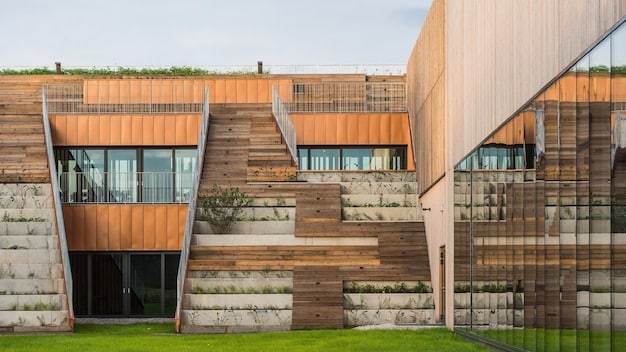
By 2026, advanced recycling technologies will likely enable the widespread use of recycled plastics in home construction. This innovative approach will not only address the global plastic waste crisis but also provide affordable, durable, and sustainable building solutions. Homes built with recycled plastics will be energy-efficient, resilient, and environmentally responsible.
The Impact on Energy Efficiency
Sustainable building materials significantly enhance energy efficiency in homes. Materials like bamboo, mycelium, and recycled plastics offer excellent insulation properties, reducing the need for excessive heating and cooling. How will these sustainable materials contribute to energy-efficient homes by 2026?
Superior Insulation
These materials trap air, providing a natural barrier against temperature fluctuations. This can lead to significant reductions in energy consumption, resulting in lower utility bills and a smaller carbon footprint.
Reduced Thermal Bridging
Sustainable materials minimize thermal bridging, preventing heat transfer through the structure. This ensures a more consistent indoor temperature, further reducing energy consumption.
- Lower Energy Bills: Reduced need for heating and cooling, resulting in cost savings.
- Smaller Carbon Footprint: Decreased energy consumption leads to lower emissions.
- Improved Indoor Comfort: Consistent temperatures create a more comfortable living environment.
- Reduced Reliance on HVAC Systems: Natural insulation minimizes the need for air conditioning and heating.
By 2026, homes built with sustainable materials will be at the forefront of energy efficiency, offering homeowners a greener and more comfortable living experience. These homes will not only reduce their environmental impact but also provide long-term cost savings through reduced energy consumption.
Cost-Effectiveness and Affordability
One of the biggest barriers to widespread adoption of sustainable building materials is cost. However, as these technologies mature and demand increases, prices are expected to become more competitive. How will sustainable building materials become more cost-effective and affordable by 2026?
Economies of Scale
Increased production and demand will drive down the cost of sustainable materials. As more builders and homeowners embrace these options, economies of scale will make them more affordable.
Government Incentives and Subsidies
Governments are increasingly offering incentives and subsidies for green building practices. These programs can help offset the initial costs of sustainable materials, making them a more attractive option for builders and homeowners.
- Competitive Pricing: Increased production will lower costs, making sustainable materials more accessible.
- Incentive Programs: Government subsidies and tax breaks can offset initial expenses.
- Long-Term Savings: Reduced energy consumption and maintenance costs can lead to long-term savings.
- Increased Property Value: Eco-friendly homes often command higher resale values.
By 2026, sustainable building materials are expected to be more cost-competitive with traditional options, thanks to economies of scale and government support. This will make them a viable choice for a wider range of homeowners, driving the adoption of green building practices.
Overcoming Challenges and Barriers
Despite their numerous benefits, sustainable building materials still face challenges in terms of adoption. Addressing these challenges is crucial to unlocking their full potential. What are the primary barriers to the adoption of sustainable building materials, and how can they be overcome by 2026?
Addressing Supply Chain Issues
Ensuring a reliable and consistent supply of sustainable materials is essential. Investing in local production and distribution networks can help overcome supply chain challenges.
Improving Building Codes and Standards
Updating building codes and standards to recognize and incorporate sustainable materials is necessary. This will provide builders with clear guidelines and ensure the safety and performance of these materials.
- Supply Chain Development: Investing in local production and distribution networks.
- Updating Regulations: Incorporating sustainable materials into building codes and standards.
- Education and Awareness: Raising awareness among builders, architects, and homeowners.
- Promoting Innovation: Supporting research and development of new sustainable materials.
By 2026, overcoming these challenges will pave the way for greater adoption of sustainable building materials. Increased awareness, supportive regulations, and robust supply chains will make it easier for builders and homeowners to embrace these eco-friendly options, transforming the future of home construction.
| Key Point | Brief Description |
|---|---|
| 🌱 Bamboo’s Versatility | Strong, renewable, and ideal for structural and aesthetic applications. |
| 🍄 Mycelium Innovation | Biodegradable, insulating, and potentially self-repairing bricks and panels. |
| ♻️ Recycled Plastics | Durable bricks and composite lumber reducing waste and costs. |
| ⚡️ Energy Efficiency | Superior insulation reducing energy consumption and costs. |
FAQ
▼
Bamboo is sustainable due to its rapid growth rate, high strength, and carbon sequestration abilities. It regenerates quickly, requires minimal resources, and helps reduce carbon emissions.
▼
Mycelium uses agricultural waste to create biodegradable bricks and panels. It offers excellent insulation, reduces landfill waste, and minimizes the need for synthetic materials.
▼
Recycled plastics reduce landfill waste, offer durability, and are resistant to water and insects. They provide a cost-effective and environmentally friendly alternative to traditional materials.
▼
Sustainable materials offer superior insulation, reducing the need for heating and cooling. This lowers energy consumption, reduces utility bills, and minimizes the carbon footprint of homes.
▼
Challenges include supply chain issues, the need for updated building codes, and raising awareness among builders and homeowners. Overcoming these barriers is essential for widespread adoption.
Conclusion
As we look toward 2026, the transformation of home construction through sustainable building materials is not just a possibility but a growing reality. Embracing bamboo, mycelium, and recycled plastics promises a future where homes are not only environmentally friendly but also more efficient, durable, and affordable.
